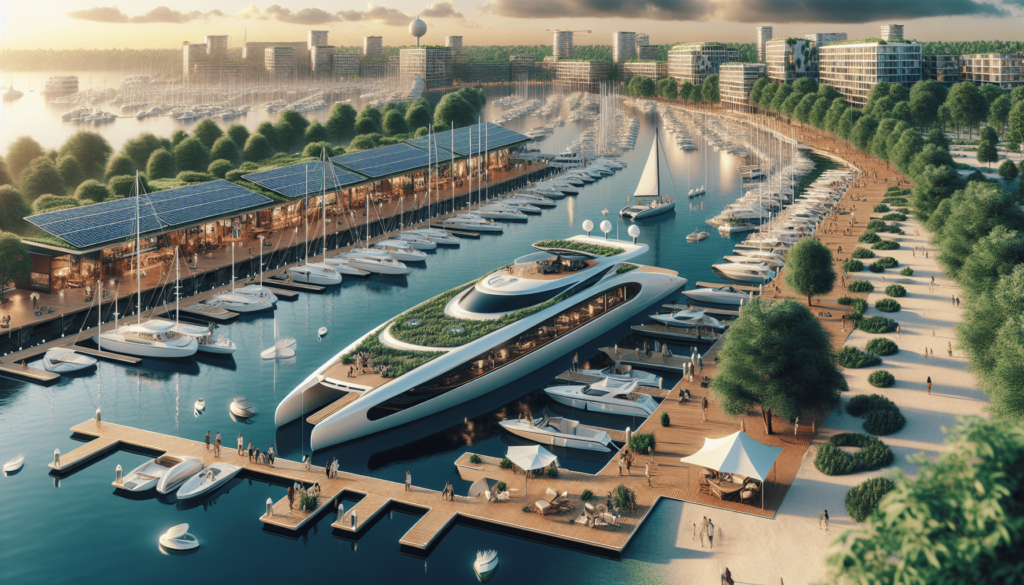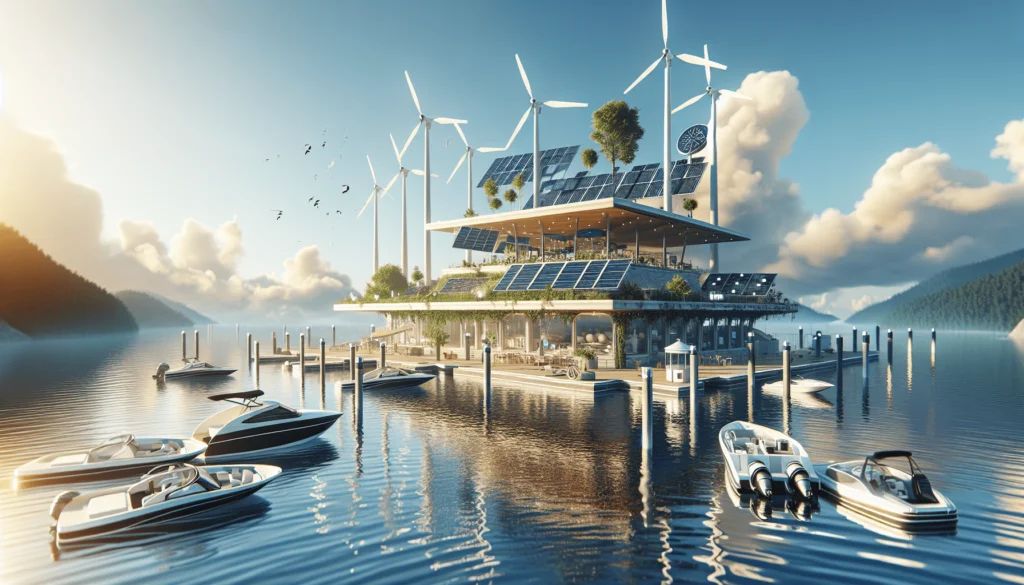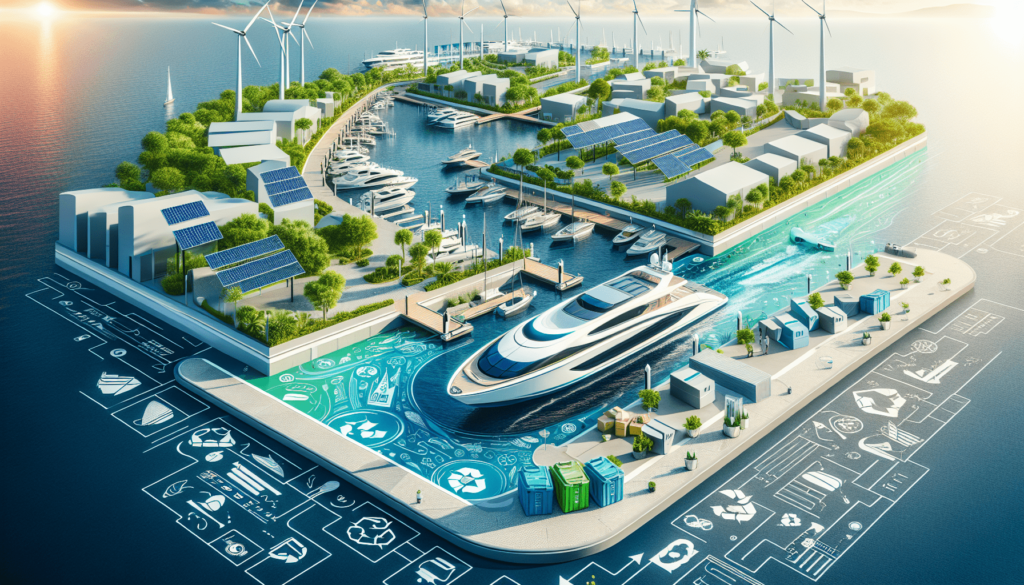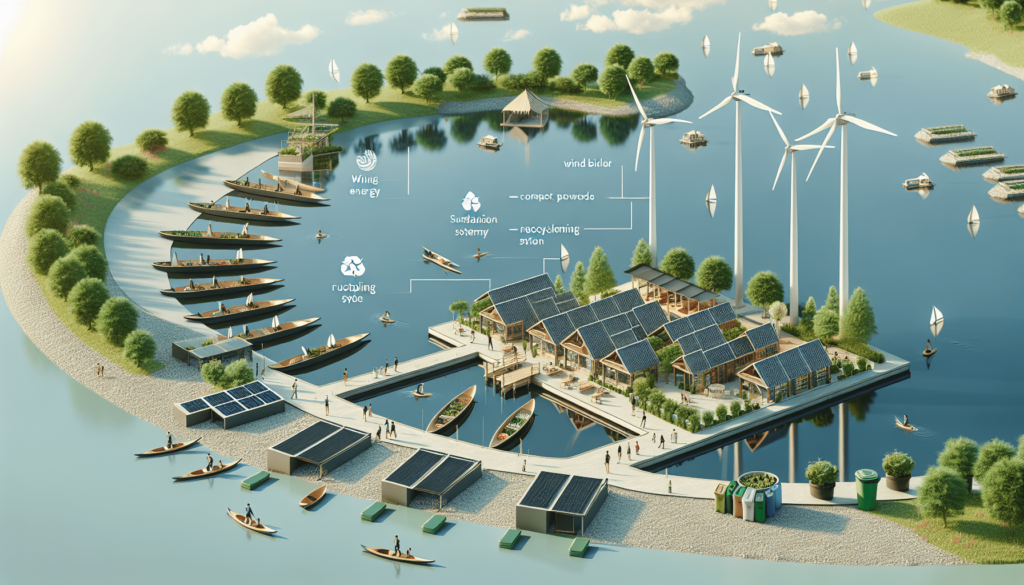Imagine, sailing across the crystal-clear waters while also preserving the environment. The “Eco-Friendly Boating Infrastructure and Facilities” article speaks to you, the conscientious mariner, on how to harmonize your love for boating with wise stewardship of our natural resources. You’ll learn about the latest advancements in eco-friendly boating infrastructure from marinas made with sustainable materials to innovative waste management systems that keep our waters pristine. Treading the line between enjoyment and responsibility, this piece offers key insights into pioneering practices that are changing the facade of boating communities worldwide.

Understanding Eco-Friendly Boating Infrastructure
Boating is a favorite pastime for many and an industry that thrives worldwide, particularly in areas blessed with beautiful water bodies. Yet traditionally, boating hasn’t always been kind to the environment. Fast forward to the present, though, and it’s quite a different story. Eco-friendly boating infrastructure is gaining popularity, with innovators and boating enthusiasts searching for ways to make boating more sustainable.
Importance of Sustainable Boating Infrastructure
As a passionate boater, you’ve probably noticed how much boating infrastructure supports your hobby. Boat slips, docking facilities, fueling stations, waste disposal points, and maintenance areas – they’re all crucial. But imagine if all these facilities were designed, built, and operated sustainably. The carbon footprint of the boating activities you love could be significantly reduced, and as a result, your hobby would be contributing to preserving the environment for future generations while providing a healthier experience for today’s users.
Types of Eco-Friendly Boating Facilities
Eco-friendly boating facilities come in many forms. Green marinas focus on sustainable practices; for instance, using energy-efficient lighting, minimizing waste generation, and facilitating proper disposal. Clean boatyards employ environmentally-friendly maintenance practices, such as capturing runoff from boat washing to prevent it from entering the surrounding water. Some areas even have eco-friendly boat manufacturing facilities that favor sustainable materials and construction techniques, while others utilize renewable energy systems on boats to decrease reliance on fossil fuel-powered engines.
Impact of Traditional Boating Infrastructure on Environment
Before going further, let’s examine why are we even talking about eco-friendly boating infrastructure? Well, traditional boating facilities and practices have had negative impacts on the environment. Things like fuel leaks from boats, waste disposal into the water, and harmful boat cleaning practices have over the years caused water pollution, endangered marine life, and damaged water-based ecosystems.
Green Marinas
A significant part of eco-friendly boating infrastructure is Green Marinas.
Definition and Importance of Green Marinas
Green Marinas are harbours designed and operated to conserve energy, minimize waste output, and preserve natural surroundings. They are often certified by authorities demonstrating their commitment to environmentally-friendly practices and standards. Green Marinas are implicitly important as they support a shift towards sustainability in boating while ensuring that facilities are provided for water enthusiasts to enjoy their activities responsibly.
Examples of Environmentally-Friendly Marina Practices
Encouraging water conservation, installing efficient LED lighting, recycling used oil, promoting boat maintenance practices that reduce pollutants, and designing marinas with materials that are less harmful to habitats – all are environmentally friendly practices undertaken by green marinas. Other practices include providing pollution prevention equipment like bilge socks to boaters and having a comprehensive waste management plan.
Benefits of Green Marinas for Local Ecosystems
Green Marinas not only reduce environmental impact but also provide direct benefits to local ecosystems. They can reduce soil and water pollution, creating a healthier living environment for local plant and animal species. They can also work to preserve local habitats and reduce disturbances, which helps to maintain biodiversity.

Eco-Friendly Boat Building Materials and Techniques
Beyond the marinas, the boats themselves are part of the equation.
Sustainable Marine-Grade Building Materials
Sustainable building materials are ones that have a low environmental impact. In eco-friendly boat building, sustainable marine-grade materials such as aluminium, recycled plastics, and bio-composites stand out. An eco-conscious boat builder might also choose paints and finishes that are less toxic to the environment.
Impact of Green Boat Construction on the Environment
Using sustainable materials and eco-friendly building techniques in boat construction can significantly reduce the boating sector’s environmental impact. Not only are these materials less damaging during extraction and processing, but they also tend to be more durable, reducing the frequency of replacement and the waste that comes with it.
Examples of Environmentally-Responsible Boat Building Techniques
Some boat builders are pioneering the use of greener building techniques, such as the adoption of cleaner manufacturing processes that reduce harmful emissions and waste. Others are making use of solar panels and wind turbines for boat manufacturing processes, further shrinking the carbon footprint.
Solar and Wind Powered Boating Systems
Many might not know this, but renewable energy has already found its way into boating.
Role of Renewable Energy in Boating
The role of renewable energy in boating is increasing as people are starting to recognize the potential of solar and wind power for propulsion and onboard energy generation. Many modern boats are equipped with solar panels and wind turbines, offering a cleaner source of energy for the boat’s electrical systems and reducing their reliance on traditional, polluting fuel sources.
Advantages and Limitations of Solar and Wind Power in Boating
Renewable energy resources provide reliable, clean power and reduce fuel costs. They also limit the boating industry’s contribution to climate change. However, there are limitations. Although technology is advancing rapidly, solar and wind energy currently offer less power than fuel-based engines, which could impact the speed or range of a boat.
Case Studies of Successful Renewable Energy Boating Systems
Yet despite their limitations, renewable-powered boating systems are operational today and achieving impressive results. Many sail and motor boats are successfully harnessing wind and solar power to run their onboard systems and are proving that green boating can match traditional boating in terms of innovation and performance.

Waste Management and Pollution Control in Marinas
A crucial aspect of eco-friendly boating infrastructure is conscientious waste management.
Need for Efficient Waste Management in Marinas
Marinas, by their very nature, can generate substantial amounts of waste, from plastic bottles to oil changes to fish waste, and sometimes, sadly, littering. Efficient waste management systems in marinas can significantly reduce the environmental impact of these activities.
Eco-Friendly Waste Disposal Solutions
Some of the green waste disposal solutions that marinas can implement include providing recycling bins, promoting the use of reusable materials, ensuring proper disposal of fishing equipment, and installing water purification systems to clean wastewater.
Preventing Water Pollution in Marinas
Taking steps to prevent water pollution in marinas is extremely important. This can be achieved by educating boaters about the dangers of discarding trash into the water, providing facilities for waste disposal, and undertaking regular maintenance to ensure that boats and marina facilities do not leak harmful substances into the water.
Eco-Friendly Boating Amenities
Eco-friendly amenities are those that satisfy your needs as a boater without harming the environment.
Eco-friendly amenities for boaters
Some examples of green amenities could include solar-powered lights, electric charging stations, and shower facilities that use rainwater collection systems. Green amenities can also cover services to promote sustainable practices, such as bicycle rentals for getting around on land.
Promotion of sustainable lifestyles among boaters
By emphasizing eco-friendly amenities, marinas can play a significant role in promoting sustainable lifestyles among boaters. These services become a constant reminder of the importance of environmental responsibility, influencing boaters to make greener choices even beyond the marina.
Influence of amenities on boaters’ attitudes towards the environment
The amenities that marinas offer can play a significant role in shaping boaters’ attitudes towards the environment. Offering green amenities and encouraging their use shows that being eco-friendly is achievable and beneficial, not just for the environment but also for their boating experience.

Water Quality Improvement Initiatives
Improving the quality of the water around boating facilities is a crucial part of eco-friendly practices.
Role of Marinas and Boating Facilities in Water Conservation
Through eco-friendly operations, marinas and boating facilities can conserve significant amounts of water. This might involve installing low-flow faucets and showers, recycling water where possible, and carefully managing plant irrigation.
Ways to Improve Water Quality in and around Marinas
To improve water quality, marinas can invest in storm water management systems to prevent runoff pollution. They can also educate boaters and employees about the importance of not discharging untreated sewage or throwing trash into the water.
Case Studies of Successful Water Quality Improvement Initiatives
There are numerous case studies of marinas successfully implementing water quality improvement initiatives. Some are making use of natural materials like oysters to filter impurities from the water, while others are installing innovative filtration systems to ensure the water leaving the facility is clean.
Conservation and Protection of Marine Life
One of the biggest responsibilities of eco-friendly boating is to conserve and protect marine life.
Impact of Boating Infrastructure on Marine Ecosystems
Traditionally, boating infrastructure can negatively impact marine ecosystems. Problems can range from direct harm caused by boat propellers to the more subtle effects of water and noise pollution. That’s why it’s so important to transition to eco-friendly practices.
Best Practices for Protection of Marine Life in Marinas
To protect marine life, marinas should be designed to minimize disturbances to natural habitats. This might involve using floating docks that don’t require pilings or setting up buffer zones to protect sensitive areas. Marina operators should also encourage boaters to appreciate and conserve the local marine life.
Community Engagement in Marine Conservation Efforts
Community engagement efforts can significantly increase the impact of conservation initiatives. Through educational programs, cleanups, and volunteering opportunities, boaters can become active participants in protecting the marine environment.

Government Policies and Regulations for Green Boating
Government policies can push for greater eco-friendliness in boating.
Significance of Government Role in promoting Green Boating
The government plays a vital role in promoting green boating by establishing and enforcing standards and guidelines. Governments can also incentivize boating facilities to adopt green practices through subsidies or regulatory ease.
Existing Policies and Regulations related to Eco-Friendly Boating
Several policies and regulations exist, promoting eco-friendly boating. These include requirements for clean bilges, restrictions on harmful boat cleaning practices, and laws governing waste disposal.
Importance of Compliance with Green Boating Standards and Guidelines
Compliance with green boating standards is important as it helps to ensure the boating industry as a whole is moving towards sustainability. It also sets a precedent that other boaters can follow.
Future Trends in Eco-Friendly Boating Infrastructure
Eco-friendly boating infrastructure is an evolving field with new advancements and trends continually emerging.
Predicted Innovations and Improvements in Green Boating
Future innovations could include more efficient renewable energy systems, advanced water filtering technologies, and even self-sufficient boats that produce zero waste. Existing green practices will also likely continue to be refined and improved.
Role of Technology in Advancing Eco-Friendly Boating
Technology will be crucial in advancing eco-friendly boating, from high-tech materials for boat construction to digital solutions for managing waste and energy use. Technology can also be used to educate boaters about eco-friendly practices and engage them in conservation efforts.
Potential Impact of Future Green Boating Trends on the Environment
As these trends become mainstream, the boating industry’s impact on the environment will hopefully lighten. A future with eco-friendly boating infrastructure is not just healthier for the environment but can also offer a richer, more sustainable boating experience for you. After all, the seas, rivers, and lakes are what make boating possible – it’s only right that we protect them.

